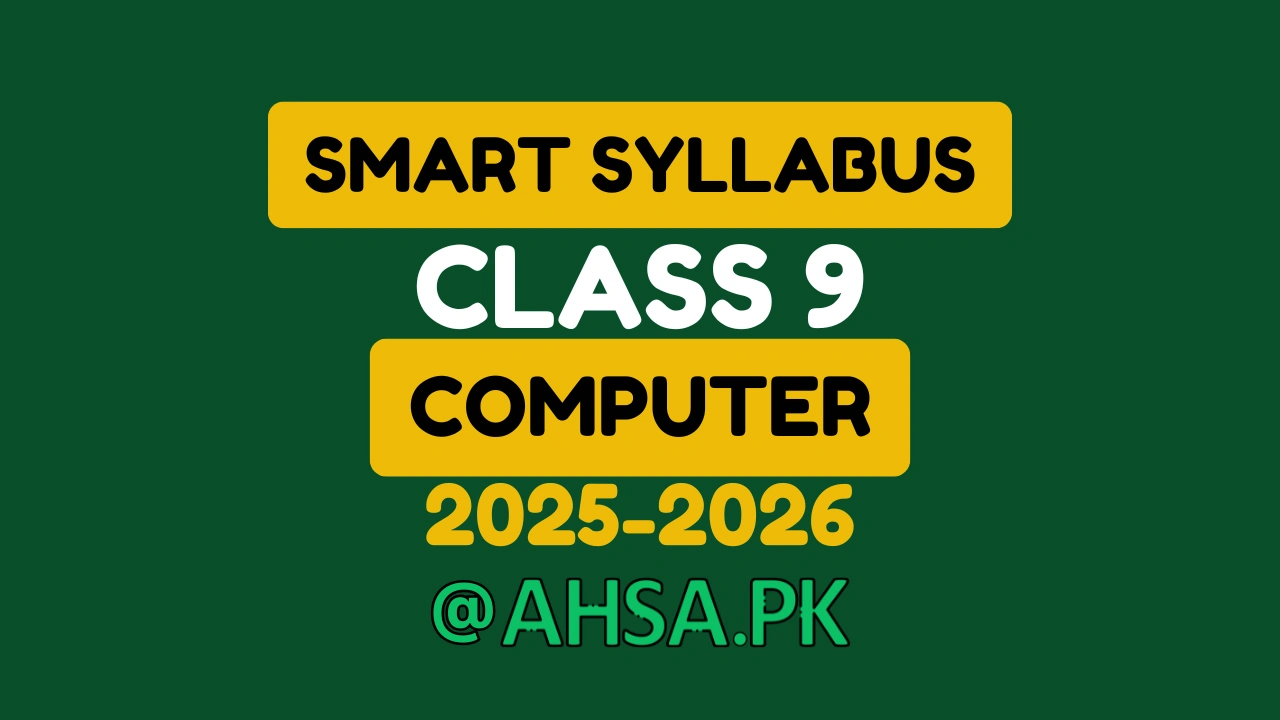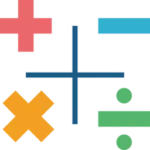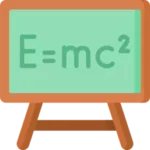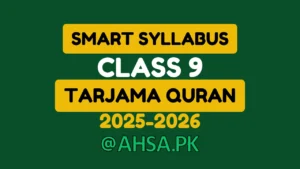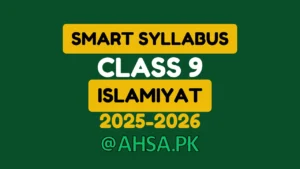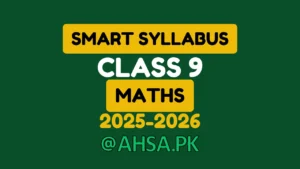The Punjab Curriculum and Textbook Authority (PECTA) has officially released the 9th Class Smart Syllabus Computer for the academic year 2025-2026. This “Smart Syllabus” is designed to help students focus on core concepts and prepare effectively for their annual exams.
Below, you’ll find a complete breakdown of the syllabus, exam pattern, and key topics to concentrate on.
📖 9th Class Smart Syllabus Computer – ALP 2025-2026
The following chapters and topics have been removed from the 9th Class Smart Syllabus Computer and will not be part of the annual exam 2026. You should focus your studies on the remaining content.
Deleted Content and Questions
Unit 1: Introduction To Systems
- Types of System Objectives (Pg. 3-4)
- Static vs Dynamic Systems (Pg. 5)
- Activity (Pg. 6)
- Types of Systems (Pg. 7-10)
- Design Science of Computer Science (Pg. 12)
- Computer as System (Pg. 13-15)
- Computing Systems (Pg. 18-20)
- Exercise:
- MCQs: Q. 4, 6, 7, 10 (Pg. 22-23)
- Short Questions: Q. 3, 4, 10 (Pg. 23)
- Long Questions: Q. 2-5, 8 (Pg. 23)
Unit 2: Number System
- Binary Encoding of Integers(Z) and Real Numbers(R), Whole Numbers (W) and Integers (Z) (Pg. 31)
- Understanding Floating Point Representation (Pg. 33-36)
- Storing Images, Audio and Video in Computers (Pg. 43-44)
- Exercise:
- MCQs: Q. 7-10 (Pg. 47)
- Short Questions: Q. 8-10 (Pg. 47)
Unit 3: Digital Systems and Logic Design
- Application of Digital Logic (Pg. 62-66)
- Class Activity (Pg. 66)
- Exercise:
- MCQs: Q. 4
- Short Questions: Q. 5
- Long Questions: Q. 3-6, 8, 9
Unit 4: System Troubleshooting
- Troubleshooting Strategies (Pg. 74)
- Addressing Security Threats (Pg. 79)
- Using Resources for Troubleshooting (Pg. 81-82)
- Exercise:
- MCQs: Q. 6, 9, 10
- Long Questions: Q. 5, 6, 8, 9
Unit 5: Software System
- Introduction to System Software and Application Software (Pg. 89-96)
- Exercise:
- MCQs: Q. 1, 3, 5-7, 9, 10
- Short Questions: Q. 2-4, 6-8
- Long Questions: Q. 2-6
Unit 6: Introduction to Computer Networks
- Key Concepts in Network Security (Pg. 114-116)
- Exercise:
- MCQs: Q. 6
- Short Questions: Q. 4, 6, 8-10
- Long Questions: Q. 3, 5, 8
Unit 7: Computational Thinking
- Class Activity Algorithm Challenge (Pg. 128)
- Did You Know? (Pg. 141)
Unit 8: Web Development with HTML, CSS and JavaScript
- History of HTML (Pg. 155)
- Styling Background (Pg. 163-164)
- Positioning (Pg. 165-166)
- Adding Animations and Transitions to CSS (Pg. 167-168)
- Data Types (Pg. 170)
- Handling Events and User Input (Pg. 172-175)
- Debugging Techniques (Pg. 175-176)
- Exercise: Long Questions: Q. 7, 8
Unit 9: Data Science and Data Gathering
- Examples of Data (Pg. 180)
- Types of Qualitative Data (Pg. 181-182)
- Types of Quantitative Data (Pg. 182-184)
- Class Activity (Pg. 185)
- Gathering Data from Online Sources (Pg. 188-189)
- Data Storage Techniques (Pg. 190-191)
- Importance and Benefits of Data Visualization (only Paragraph) (Pg. 192)
- Visualizing Different Data Types (Pg. 192)
- Statistical Analysis (Pg. 195-196)
- Methods for Analyzing Qualitative Data (Pg. 196)
- Class Activity (Pg. 197)
- Collaborative Authoring (Pg. 198-199)
- Data Science Work Flow (Pg. 200)
- Class Activity (Pg. 201)
- Big Data and its Application (Pg. 201-206)
- Exercise:
- MCQs: Q. 3-5, 7, 12-14
- Short Questions: Q. 2, 3, 6-8, 11
- Long Questions: Q. 3, 5, 7, 8, 10
Unit 10: Emerging Technologies
- Historical Context of Artificial Intelligence (Pg. 212-213)
- Explainable Whitebox Algorithm (Pg. 216)
- Implications and Future of Emerging Technologies (Pg. 220-221)
- Exercise:
- MCQs: Q. 8-10
- Short Questions: Q. 2, 7-10
- Long Questions: Q. 2, 5-9
Unit 11: Ethical, Social, and Legal Concerns in Computer Usage
- Class Activity (Pg. 227)
- Safe and Secure Operations of Digital Platforms (Pg. 228)
- Importance of Privacy Settings and Data Security Measures (Pg. 230)
- Legal Ethical Framework (Pg. 230-232)
- Ethical and Legal Responsibilities Regarding Intellectual Property (Pg. 233)
- Responsible Internet Use (Pg. 233-235)
- Class Activity (Pg. 236)
- Impact of Computing on Society (Pg. 236-238)
- Exercise:
- MCQs: Q. 10, 11, 13-15
- Short Questions: Q. 2-5, 14, 15, 18-21
- Long Questions: Q. 3, 4, 6, 8
Unit 12: Entrepreneurship in Digital Age
- E-Commerce Platform (Pg. 249-252)
- Ideation and Problem Solving (Pg. 253)
- Class Activity and Did You Know? (Pg. 257)
- Class Activity and Did You Know? (Pg. 258)
- Exercise:
- MCQs: Q. 4, 5
- Short Questions: Q. 5
- Long Questions: Q. 3, 5
Instructions for Preparation of Exam Paper of Computer Science & Entrepreneurship for Grade-9
Essential Instructions for Paper Setters
- Total marks: 50
- MCQs: 15 minutes
- Short and Long Questions: 1 hour 45 minutes
Part-I: Objective
- Q-1: 10 Multiple-Choice Questions
- 1 MCQ from Chapters 1–4, 6–11 (excluding Chapter 5)
- Marks: 1×10=10
Part-II: Subjective
- Q-2: 4 short answer questions out of 6
- 1 from Chapter 1
- 2 from Chapter 2
- 2 from Chapter 3
- 1 from Chapter 4
- Marks: 2×4=8
- Q-3: 4 short answer questions out of 6
- 2 from Chapter 6
- 2 from Chapter 7
- 1 from Chapter 5
- 1 from Chapter 8
- Marks: 2×4=8
- Q-4: 4 short answer questions out of 6
- 2 from Chapter 9
- 2 from Chapter 12
- 1 from Chapter 10
- 1 from Chapter 11
- Marks: 2×4=8
Part-III: Subjective (Detailed Questions)
- Q-5: One detailed question from Chapter 3
- Q-6: One detailed question from Chapter 6
- Q-7: One detailed question (Part a and b) from Chapters 7 and 8
- Attempt any 2 questions
- Marks: 2×8=16
💡 Key Takeaways & Preparation Tips
- Focus is Key: A significant amount of content has been removed. Use the list above to avoid studying excluded topics and save time.
- Master the Core Concepts: Since the syllabus is reduced, expect questions to test a deeper understanding of the fundamental concepts that are included.
- Practice Smartly: Concentrate your practice on the exercises and examples that are part of the syllabus. Pay special attention to chapters with more weightage in MCQs and long questions.
- Understand the Paper Pattern: Knowing the marks distribution helps you allocate your study and exam time effectively. Practice the combination of short and long questions as per the pattern.

